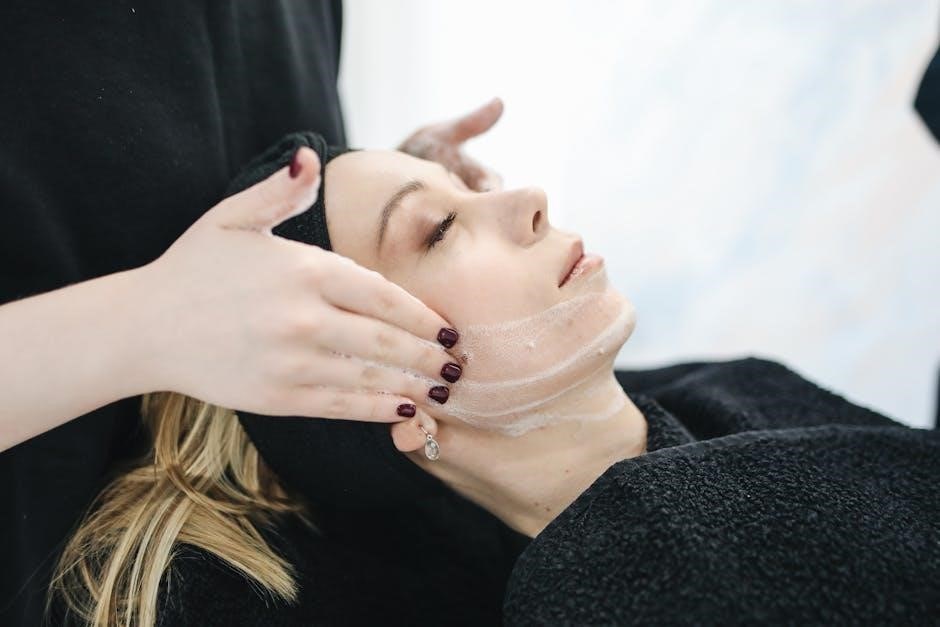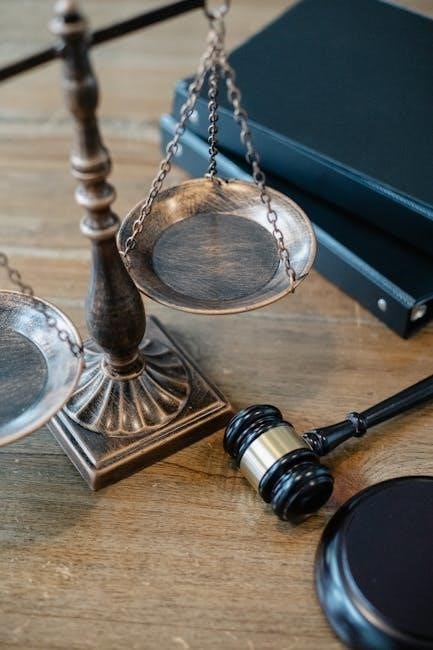
Putting Thoughts on Trial: A CBT Approach
This approach, utilized in Cognitive Behavioral Therapy (CBT), involves examining irrational thoughts. The individual will act as both defense attorney and prosecutor. This helps determine the accuracy of negative thoughts.

The “Putting Thoughts on Trial” technique, a key component of Cognitive Behavioral Therapy (CBT), offers a structured method for challenging negative and unhelpful thinking patterns. This approach, inspired by the legal system, encourages individuals to examine their thoughts as if they were on trial, acting as both the defense and prosecution.
The core idea is to objectively assess the evidence for and against a particular thought, rather than simply accepting it as truth; This process involves gathering factual evidence, avoiding assumptions, and carefully evaluating the validity of the thought in question.
By engaging in this exercise, individuals can gain a deeper understanding of their own thinking patterns, identify cognitive distortions, and develop more balanced and realistic perspectives. This can lead to a reduction in anxiety, improved emotional regulation, and enhanced overall well-being. The “Putting Thoughts on Trial” technique provides a practical and empowering tool for managing negative thoughts and promoting positive change.
The Core Concept: Challenging Negative Thoughts
At the heart of “Putting Thoughts on Trial” lies the fundamental concept of challenging negative thoughts. This involves actively questioning the validity and accuracy of thoughts that contribute to feelings of distress, anxiety, or low self-esteem. Instead of passively accepting these thoughts as facts, individuals are encouraged to approach them with a critical and analytical mindset.
The process begins with identifying specific negative thoughts that are causing emotional distress. Once identified, these thoughts are then subjected to rigorous scrutiny. This involves examining the evidence for and against the thought, considering alternative interpretations, and evaluating the potential impact of the thought on one’s emotions and behavior.
By challenging negative thoughts, individuals can begin to dismantle the cognitive distortions that perpetuate negative emotions. This can lead to a more balanced and realistic perspective, as well as a greater sense of control over one’s thoughts and feelings. The ultimate goal is to replace negative thoughts with more positive, adaptive, and empowering ones.
Identifying the Thought for Trial

The initial step in putting thoughts on trial involves pinpointing the specific thought that is contributing to negative emotions or behaviors. This requires careful self-reflection and awareness of one’s internal dialogue; Often, these thoughts are automatic and may not be consciously recognized. They can be triggered by specific events, situations, or even internal sensations.
To identify the thought for trial, it can be helpful to pay attention to the thoughts that arise when experiencing negative emotions such as anxiety, sadness, or anger. Ask yourself, “What was I thinking just before I started feeling this way?” or “What am I telling myself about this situation?”
Once a thought has been identified, it is important to write it down clearly and concisely. This will serve as the focus of the trial. It is also helpful to note the specific situation or trigger that led to the thought, as well as the emotions and behaviors that resulted from it. This context will be valuable during the trial process.

The Roles in the Trial
In the trial, you will embody the roles of prosecutor, defense attorney, and judge. Each role serves a unique purpose in evaluating the thought’s accuracy and validity in the trial.
The Prosecutor: Arguing Against the Thought
The prosecutor’s role is to argue against the thought being examined. This involves actively seeking and presenting evidence that contradicts or disproves the thought. The goal is to challenge its validity.
The prosecutor must be diligent in finding logical fallacies within the thought. This includes fortune-telling, catastrophizing, and generalizations. The prosecutor should challenge any assumptions made, demanding verifiable evidence to support them.
Questioning the thought’s helpfulness is also crucial. Does this thought promote positive actions? Or does it lead to distress and avoidance behaviors? Ultimately, the prosecutor aims to demonstrate the thought’s inaccuracy and negative impact. This leads to considering alternative perspectives.
Consider this role as a critical examiner, challenging every aspect of the negative thought. This helps in establishing a fair and balanced evaluation in the trial.
The Defense Attorney: Arguing for the Thought
The defense attorney takes on the task of advocating for the thought. The defense attorney must present a case for the thought’s validity, seeking evidence that supports its accuracy.
This involves exploring the origins and context of the thought. This includes looking at past experiences or situations that may have contributed to its development. Identifying any potential truths or valid observations within the thought is vital.
It is important to note that the defense attorney is not necessarily agreeing with the thought. The role is to provide a fair representation and explore potential justifications. This ensures that the trial is a thorough and balanced examination of all aspects of the thought.
This includes presenting verifiable facts and logical reasoning that support the thought. The defense attorney aims to ensure the thought is not dismissed without due consideration.
The Judge: Evaluating the Evidence
The judge’s role is to objectively assess the arguments and evidence presented by both the prosecution and the defense. The judge must remain impartial, avoiding bias or preconceived notions about the thought. They should carefully consider the facts presented, determining which are verifiable and relevant.
The judge should also evaluate the strength of the reasoning used by each side. They must consider whether the conclusions drawn are logically sound and supported by the evidence. Assumptions, guesses, and emotional reasoning should be disregarded.
The judge’s objective is to determine the accuracy and helpfulness of the thought based on the evidence. This involves weighing the evidence for and against the thought, and making a judgment based on the balance of evidence. The goal is to arrive at a fair and balanced verdict.

Gathering Evidence
Evidence must be presented in factual terms. Provide evidence supporting or opposing your thought. Only include evidence that is a verifiable fact and not assumptions, and must be presented in logical terms.
Factual Evidence: What Can Be Verified
When putting thoughts on trial, gathering factual evidence is paramount. This evidence must consist of verifiable facts, things that can be objectively proven or disproven; Avoid relying on assumptions, interpretations, or personal feelings. Instead, focus on concrete data, documented events, and observable behaviors.
For example, if the thought on trial is “Nobody likes me,” factual evidence could include the number of friends you have, invitations you’ve received, or positive interactions you’ve had with others. It’s important to be specific and avoid generalizations. Instead of saying “People are always mean to me,” provide specific instances of when and how this occurred.
Verifiable facts are crucial in a trial because they provide a solid foundation for your arguments. They are less susceptible to bias and distortion, making them more persuasive to the “judge” (yourself) who is evaluating the evidence. By focusing on what can be verified, you can challenge your negative thoughts more effectively and develop a more balanced perspective.
Avoiding Assumptions and Guesses
In the pursuit of factual evidence, it’s important to avoid assumptions and guesses. These are interpretations that are not supported by concrete data. They are often based on fears or insecurities. Assumptions and guesses are not facts, and they can easily distort your perception of reality.
For instance, if your thought is “I’m going to fail this exam,” it’s easy to assume that you’re not smart enough or that the material is too difficult. However, these are just guesses. It’s important to base your arguments on verifiable data.
Instead of relying on assumptions, focus on gathering factual evidence such as your past exam performance, the amount of time you’ve spent studying, and any positive feedback you’ve received from instructors.
By avoiding assumptions and guesses, you can ensure that your “trial” is based on solid evidence rather than speculation. This will lead to a more accurate verdict and help you develop more realistic thoughts.

The Trial Process
This is where the prosecution and defense present their cases. Each side will bring forth evidence. The goal is to determine the accuracy of the initial thought.
Presenting the Case for the Prosecution

The prosecution’s role is to argue against the initial thought. This involves presenting factual evidence that contradicts the thought’s validity. Avoid assumptions. Instead, focus on what can be verified as truth; Gather concrete examples of the thought not being universally true. Consider instances where the thought proved false. The prosecution must demonstrate the thought’s negative impact.
Highlight how it causes distress or hinders progress. Provide examples of how this thought has led to negative outcomes. The prosecution should also show how adopting this thought creates a self-fulfilling prophecy. The aim is to present a compelling argument.
The argument should showcase the thought’s limitations and inaccuracies. The prosecution is to convince the “judge” to see the thought as flawed.
Presenting the Case for the Defense
The defense attorney’s job is to argue in support of the thought. This involves finding evidence that supports the thought’s validity. This doesn’t mean ignoring facts. It means presenting the thought in its most favorable light. Identify situations where the thought has been true or helpful.
Consider the context in which the thought arose. Explore if the thought served a protective function. Look for any potential benefits that the thought might offer. The defense should highlight the thought’s origin. Argue that it might have been adaptive at some point.
The aim is not to prove the thought is always true. It’s to demonstrate it’s not entirely without merit. The defense creates a balanced perspective. The defense should try to help the “judge” understand the thought. The judge should understand it’s potential utility.

Reaching a Verdict: Is the Thought Accurate?
After both sides have presented their cases, it’s time to reach a verdict. This involves the “judge” weighing the evidence presented by both sides. Consider the factual basis of each argument. Determine whether the evidence presented is verifiable and logical. Avoid relying on assumptions.
The goal isn’t necessarily to declare the thought true or false. It’s to determine its overall accuracy and usefulness. Consider the context in which the thought arises. Evaluate whether the thought is helpful or harmful in various situations. Acknowledge the validity of both sides of the argument.
The verdict should reflect a balanced assessment of the thought. If the thought is deemed inaccurate or unhelpful, identify alternative, more balanced thoughts. These balanced thoughts should be more realistic. These thoughts should be more helpful in promoting well-being.

Applying the Outcome
Following the trial, apply the outcome. Develop balanced thinking patterns. Reduce anxiety through challenging thoughts. Replace negative thoughts with healthier ones. Promote well-being through realistic and helpful perspectives.
Developing Balanced Thinking Patterns
Developing balanced thinking patterns is a crucial step in cognitive restructuring. This involves moving away from extreme or all-or-nothing thinking. Instead of viewing situations as purely good or bad, aim for a more nuanced understanding.
Cultivate the ability to see shades of gray. Recognize that most situations are complex and multifaceted. This will allow you to avoid jumping to conclusions. Focus on identifying evidence that supports multiple perspectives.
Actively challenge your initial reactions. Ask yourself if there are alternative explanations for events. Consider the possibility that your initial thoughts are biased. Seek out information that challenges your preconceived notions.

Practice self-compassion and understanding. Treat yourself with the same kindness and empathy you would offer a friend. Acknowledge that everyone makes mistakes. Learn from your experiences and move forward with a more balanced outlook.
Reducing Anxiety Through Challenging Thoughts
Challenging negative thoughts is a cornerstone of reducing anxiety. Anxiety often stems from catastrophic thinking and worst-case scenarios. By questioning these thoughts, you can diminish their impact. The “Putting Thoughts on Trial” technique offers a structured method for this.
Begin by identifying the specific thought contributing to your anxiety. Write it down and examine it objectively. Is there evidence to support this thought, or is it based on assumptions? Act as a detective, seeking facts rather than feelings.
Once you’ve gathered evidence, challenge the thought’s validity. Consider alternative explanations and more realistic outcomes. Acknowledge that uncertainty is a part of life. By confronting anxious thoughts, you can regain control over your emotional responses.
Regularly practicing thought-challenging techniques builds resilience. It equips you with the tools to manage anxiety-provoking situations. This enables you to live a more peaceful and fulfilling life.